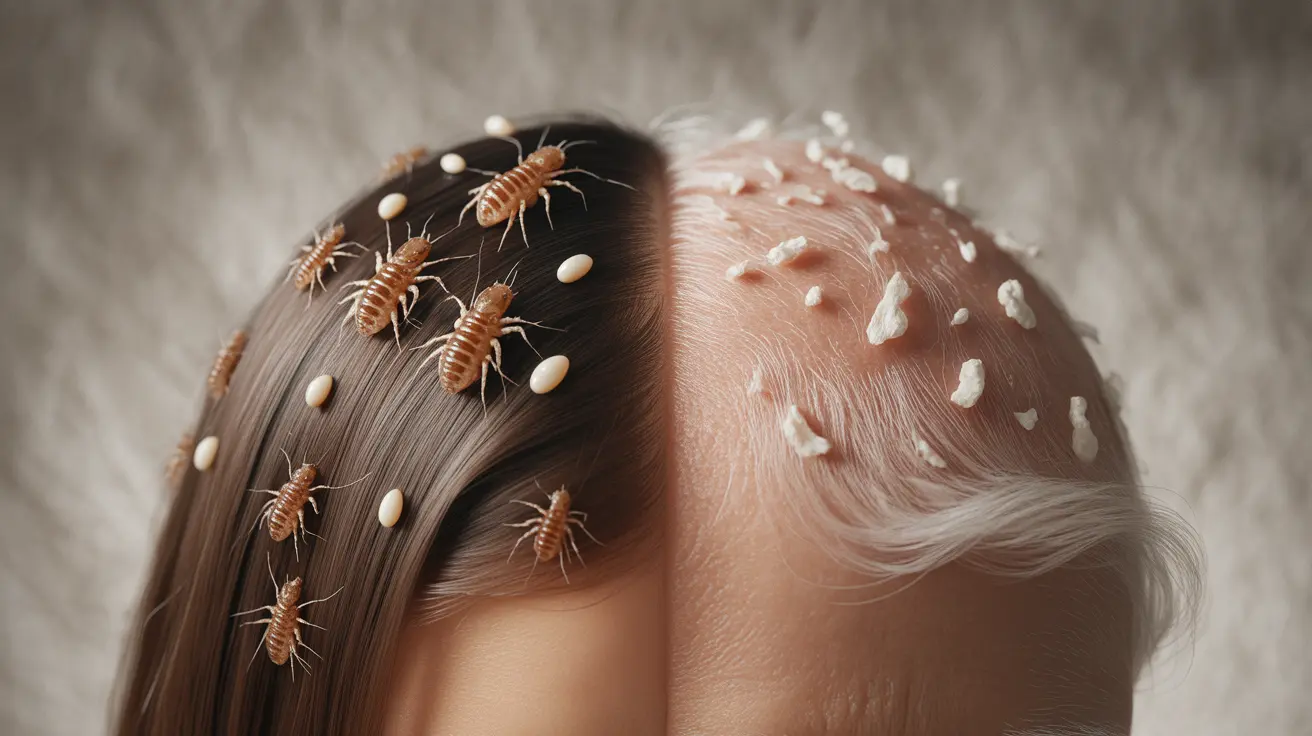When it comes to scalp conditions, distinguishing between head lice and dandruff can be challenging for many people. While both conditions can cause itching and discomfort, they have distinct characteristics, causes, and treatment approaches. Understanding the difference between lice and dandruff is crucial for proper diagnosis and effective treatment.
This comprehensive guide will help you identify whether you're dealing with lice or dandruff, explore treatment options for both conditions, and provide essential prevention strategies.
Key Characteristics and Visual Signs
Head Lice Identification
Head lice are tiny parasitic insects that live on the human scalp and feed on blood. They are usually tan to grayish-white in color and about the size of a sesame seed. The most distinctive signs include:
- Visible lice eggs (nits) attached to hair shafts
- Small moving insects in the hair
- Intense itching, particularly behind the ears and at the neckline
- Small red bumps on the scalp
- Visible bite marks or scratch marks
Dandruff Characteristics
Dandruff is a common scalp condition characterized by flaking of the skin. Key indicators include:
- White or grayish flakes that easily fall from the scalp
- Mild to moderate itching
- Oily or dry scalp
- Flakes visible on dark clothing
- No visible insects or eggs
Treatment Approaches
Managing Head Lice
Head lice require immediate treatment to prevent spread to others. Effective treatment options include:
- Over-the-counter pediculicides containing permethrin
- Prescription medications for resistant cases
- Manual removal using special lice combs
- Washing all bedding and clothing in hot water
- Regular checking and follow-up treatments as needed
Controlling Dandruff
Dandruff management typically involves:
- Anti-dandruff shampoos containing zinc pyrithione or selenium sulfide
- Regular scalp cleansing and moisturizing
- Lifestyle modifications to reduce scalp irritation
- Stress management techniques
- Dietary adjustments if needed
Prevention Strategies
Preventing Lice Spread
To minimize the risk of lice infestation:
- Avoid head-to-head contact during play and sports
- Don't share personal items like combs or hats
- Regular scalp checks, especially for school-age children
- Prompt treatment if lice are detected
- Education about transmission prevention
Managing Dandruff Long-term
To prevent dandruff flare-ups:
- Maintain good scalp hygiene
- Use appropriate hair care products
- Manage stress levels
- Stay hydrated and maintain a balanced diet
- Regular use of preventive anti-dandruff products
Frequently Asked Questions
What are the key differences between lice and dandruff symptoms?
While both cause itching, lice leave visible eggs (nits) attached to hair shafts and cause intense itching. Dandruff produces loose white flakes and typically causes mild itching without any visible insects or eggs.
How do you effectively treat lice infestations in children?
Use FDA-approved over-the-counter or prescription lice treatments, thoroughly comb through hair with a special lice comb, and wash all bedding and clothing in hot water. Repeat treatment after 7-9 days to ensure all lice are eliminated.
Can dandruff be contagious, or is it just a personal scalp condition?
Dandruff is not contagious. It's a personal scalp condition that can be caused by various factors including dry skin, oily skin, sensitivity to hair products, or underlying skin conditions.
What are some effective treatments for persistent dandruff that doesn't respond to over-the-counter shampoos?
For resistant dandruff, consult a dermatologist who may prescribe stronger medicated shampoos, topical steroids, or antifungal treatments. They might also recommend investigating underlying conditions like seborrheic dermatitis.
How can you prevent lice from spreading in a school setting?
Implement regular head checks, educate children about avoiding head-to-head contact, discourage sharing of personal items, and establish clear protocols for notification and treatment when cases are detected. Prompt treatment of affected individuals is crucial.




